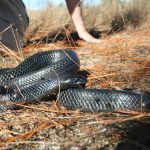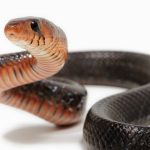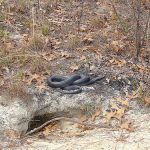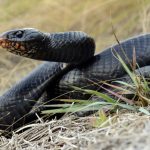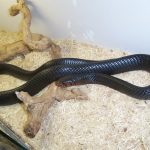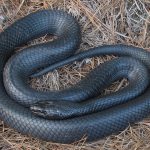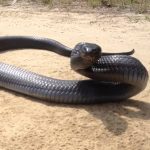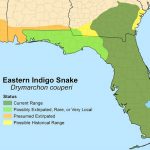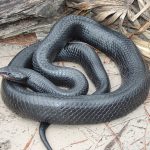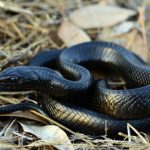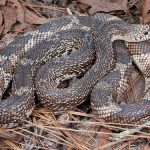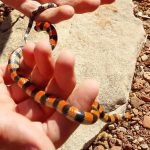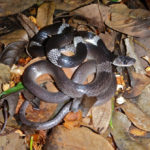Eastern Indigo Snake
The species, being the longest native snake of the United States of America, has the ability to digest the venom of rattlesnakes. The eastern indigo snake’s genus name ‘Drymarchon’ means lords of the forest in Greek while the scientific name has been given after James Hamilton Couper, an American planter.
| Kingdom | Animalia |
| Phylum | Chordata |
| Class | Reptilia |
| Order | Squamata |
| Suborder | Serpentes |
| Family | Colubridae |
| Genus | Drymarchon |
| Scientific Name | Drymarchon couperi |
| Other Names | Blue indigo snake, blue bull snake, blue gopher snake, black snake, and indigo |
| Size | 3.9-7.7 ft (1.1-2.34 m) |
| Weight | 52.8 oz (3.3 lb) |
| Color | Lateral and dorsal scales are blue-black, ventral scales are iridescent |
| Distribution | Florida, southwestern South Carolina, southeastern Mississippi, and southern Alabama |
| Habitat | Dry prairie, scrubby flatwoods, fields, and coastal dunes |
| Diet | Toads, frogs, small birds, lizards, and eggs |
| Predators | Humans |
| Venom Fact | Non-venomous |
| Breeding Season | May-June |
| Mode of Reproduction | Oviparous |
| Clutch Size | 5-6 eggs |
| Reproductive Age | 3-4 years |
| Average Lifespan | 12-21 in the wild |
| IUCN Conservation Status | Threatened |
Eastern Indigo Snake Pictures Gallery
- Drymarchon Couperi
- Eastern Indigo Snake Belly
- Eastern Indigo Snake Habitat
- Eastern Indigo Snake Images
- Eastern Indigo Snake Pet
- Eastern Indigo Snake Photos
- Eastern Indigo Snake Pictures
- Eastern Indigo Snake Range
- Eastern Indigo Snake
- Eastern Indigo Snakes


